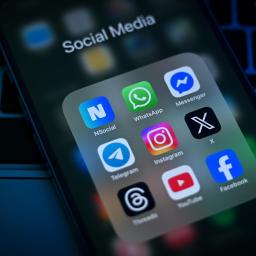 |
by Steve Dent on (#6ZTFW)
The government of Nepal is blocking commonly used social platforms including Facebook, X, Instagram, WeChat, Reddit and YouTube due to noncompliance with a new law requiring them to register with the government, The Associated Press reported. Five platforms including TikTok and Viber that did register in the country were exempted from the ban.Social media companies were asked to provide a local contact, grievance handler and person responsible for self-regulation to avoid a shutdown and many apparently failed to do so. "Unregistered social media platforms will be deactivated today onwards," ministry spokesperson Gajendra Kumar Thakur told Agence France Presse.The Nepalese government recently introduced a directive forcing social media companies to ensure their platforms were well-managed, responsible and accountable. The government said the bill was an effort to curb online hate, rumors and cybercrime. However, it was widely criticized by opponents as a tool for censorship, with some groups calling it a violation of citizens' basic rights."It is not wrong to regulate social media, but we first need to have the legal infrastructure to enforce it. A sudden closure like this is controlling," said Digital Rights Nepal president Bhola Nath Dhungana. Another group, the Federation of Nepali Journalists said the measure "undermines press freedom and citizens' right to information." Also expressing opposition was the New York-based Committee to Protect Journalists.Nepal is the latest government to tighten social media oversight, with countries including the US, Europe and Brazil having done so to varying degrees of late. Nepal's neighbor India has also mandated local compliance officers and takedown mechanisms (and even threatened to jail Twitter employees at one point).This article originally appeared on Engadget at https://www.engadget.com/social-media/nepal-blocks-most-social-media-sites-for-failing-to-register-with-the-government-131512017.html?src=rss
|
 Engadget is a web magazine with obsessive daily coverage of everything new in gadgets and consumer electronics
Engadget is a web magazine with obsessive daily coverage of everything new in gadgets and consumer electronics
| Link | https://www.engadget.com/ |
| Feed | https://www.engadget.com/rss.xml |
| Copyright | copyright Yahoo 2026 |
| Updated | 2026-01-09 02:02 |
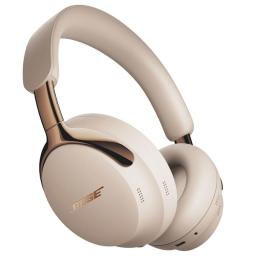 |
by Billy Steele on (#6ZTD6)
Bose announced a refresh of its QuietComfort Ultra Earbuds over the summer and now it's back with an overhaul of its flagship noise-canceling headphones. The company has employed the second-generation moniker once again on the new QuietComfort Ultra Headphones, but this time the list of updates is a bit more substantial. Bose says it made tweaks to audio performance, active noise cancellation (ANC), battery life, power efficiency and more. Surprisingly, the company managed to make its upgrades without raising the price. The biggest changes for the QC Ultra Headphones come in the sound department. First, lossless audio is now available over wired USB-C connection. Bose says you can expect 16-bit/44.1kHz or 48kHz playback and the setup doubles as a low-latency option for desktop or mobile gaming. When it comes to Immersive Audio - Bose's take on spatial audio that doesn't require specialized content - the company has added a new Cinema mode. By "spatializing and balancing background sound with other audio effects," Bose says it creates a "movie-like experience" thanks to a wider soundstage that's placed in front of the listener. As a result, dialogue clarity is enhanced, which makes Cinema mode an option for podcasts and audiobooks in addition to movies and TV shows. For general listening, the company provides deeper bass at high volume, more natural sounding treble and consistent clarity even when the content is loud. It also reduced the sound created by the ANC tech so that it's less apparent in quieter environments. Bose Speaking of ANC, Bose made the same update here that it did on the QC Ultra Earbuds. In Aware or transparency mode, the headphones better handle sudden changes in environmental noise (like sirens) with smoother changes to noise-canceling levels. On the QC Ultra Headphones, you can now disable ANC completely or manually adjust it to suit your needs. Bose extended the battery life to 30 hours of ANC use or up to 45 hours with noise cancellation disabled. If you opt for that spatial Immersive Audio all the time, you can expect up to 24 hours of use now. If you run out of juice before you want to take a break, the QC Ultra Headphones can be charged during use via the USB-C port. To help you conserve battery power, the headphones will now enter a standby mode when you lay them flat or fold them into their case. And when the time comes to resume listening, improved wear detection automatically turns on the headphones when they're placed on your head. Lastly, you'll notice that Bose opted for polished metal on the headband where the yokes used to have a flat finish. There are also two new colors: Driftwood Sand (tan) and Midnight Violet (purple). The second-gen QuietComfort Ultra Headphones are available for preorder today from Bose in black, white, tan and violet color options. The price remains $449, same as the original version, and general availability is scheduled for October 2. This article originally appeared on Engadget at https://www.engadget.com/audio/headphones/bose-overhauls-the-quietcomfort-ultra-headphones-with-lossless-audio-and-longer-battery-life-130018894.html?src=rss
|
 |
by Alessandro Fillari on (#6ZTD7)
Kirby is a uniquely wholesome Nintendo character, yet his games often have a quirky mean streak to them. They're all about letting players absorb enemies and take on some wild powers to tear through vibrant stages with reckless abandon. That's especially true with Kirby Air Riders, the long-awaited sequel to the GameCube classic racing game, Kirby Air Ride. Much like the original, it's a fast-paced racing game starring Kirby and friends as they race through visually striking locales - it also happens to be one of the most chaotic racing games I've played in quite a while.At PAX West 2025 in Seattle, I spent an hour playing Kirby Air Riders, reacquainting myself with the approachable yet surprisingly deep mechanics from the cult-favorite 2003 racing game. It's certainly interesting to see game director Masuhiro Sakurai follow up Super Smash Bros. Ultimate with a Kirby racing game. Still, after playing Air Riders, this racer carries that similar 'go-for-broke' energy that runs deep in his previous games.Like the original game, you race through a variety of stages inspired by the Kirby series. The sequel takes things further with an expanded roster of Kirby characters, such as Meta Knight and King Dedede, each with their own unique skills and stats as racers. While you race through traditional tracks, Air Riders - much like the original - also opens up free-for-all action stages and mini-games that test your skills in drifting, gliding, and the classic ability of sucking up to gain new powers.Kirby Air Riders totally doubles down on what made the original so unique, and that's what makes it such an incredibly bizarre take on a racing game. In many ways, Air Riders does to racing games what Smash Bros did for the fighting genre - injecting non-genre-conforming systems and concepts that may seem out of place for the type of game it wants to be.However, playing Kirby Air Riders can take some getting used to, especially considering its fairly limited control scheme. Much like the original, acceleration happens automatically, and the game instead has you focus on managing movement and momentum with the control stick and a single button to engage boosts - and that's all you need for controlling your chosen racer's vehicle. But therein lies the nuance of playing; by managing momentum and speed, you can engage drifts and power spin attacks to overcome rivals on the track.NintendoIt pays to be aggressive in Kirby Air Riders, as you'll gain speed by successfully landing attacks on enemies. A particular racer I used often was Return to Dream Land's Magolor, who could sprout ground spikes after landing from jumps. The sequel even expands upon the offensive nature of Air Riders with a new special ability button, which activates character-specific attacks after filling a meter.I was really taken aback by how fast and chaotic races can get, and I found myself getting caught off guard by how diabolical the other rivals can get, unleashing attacks and snatching victory in a pinch. In fact, I closed two races in 2nd place back-to-back in the final second due to King Dedede engaging their vehicle's boosts at the right time. In that sense, it took me some time to come to grips with the game's rapid pace and how quickly things can turn against you.This was especially true with the returning City Trial mode, which is essentially Kirby Air Riders' take on the classic kart-racer battle mode in the vein of Mario Kart 64 or Twisted Metal. In City Trial, players and CPU characters enter a mad dash to collect power-ups and upgrade their vehicles in a large open area, which culminates in themed mini-games to decide the final winner.It took me some time to understand the larger goal of City Trial, as it felt like getting swept up in a colorful mosh pit - one where other players can snatch your vehicles. This battle mode quickly becomes extremely hectic and the dynamic events lead to some truly bizarre scenarios, such as bombs raining down on the arena, which can send players scrambling. City Trial is a fun, mini-open-world to explore that features a set of secrets to find, and I really took a liking to just how much is packed into these events.It took me some time to really get into the groove of Kirby Air Riders and its pretty ruthless approach to action-racing - and this was after spending 20 minutes running the generous tutorials that explained the systems at work. I still liked the sheer spectacle of it all.Once I found my flow within the chaos, it really helped to bring Kirby Air Riders into focus for me, and I really appreciated the over-the-top spectacle that it is as a racing game. It's a very different type of racing that sets itself apart from Mario Kart World and other games of its kind. In fact, there are aspects of Kirby Air Riders that I still don't quite understand. OK with that because I just had so much fun trying to go with the flow.Kirby Air Riders will be released on November 20, 2025 on the Nintendo Switch 2.This article originally appeared on Engadget at https://www.engadget.com/gaming/nintendo/kirby-air-riders-hands-on-123040486.html?src=rss
|
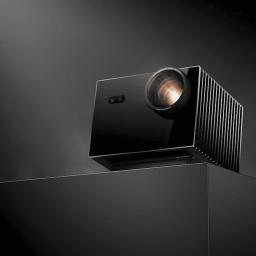 |
by Ian Carlos Campbell on (#6ZTD8)
After a successful Kickstarter campaign, Valerion is formally announcing its new premium projector, the VisionMaster Max, at IFA 2025. The boxy little projector offers improved contrast and brightness, but the feature that should be most interesting to home theater aficionados is how it tries to address the "rainbow effect" common in some cheaper projectors.Cheaper DLP projectors sometimes display stuttery strobes of color when the projector's color wheel is forced to quickly shift between colors during fast-paced scenes. While these doesn't necessarily impede watching a movie or TV show, the rainbow effect can bother sensitive projector owners. The VisionMaster Max attempts to address the problem with what Valerion calls "Anti-RBE Technology" that "reduces rainbow effects by 99.9 percent." The company pulls this off by using software to blend the individual color sequences of whatever you're watching faster than the human eye can perceive, creating what looks like a seamless image.ValerionValerion says the VisionMaster Max also has an upgraded native contrast ratio of 5,000:1 and an AI-assisted "Enhanced Black Level (EBL)" contrast of 50,000:1 for improved depth and details in shadows. Valerion's dramatically named "NoirScene Dark Field Engine System" mixes stable luminance from a fixed iris aperture and an EBL algorithm to offer deeper blacks with less need for calibration. Combined with the VisionMaster Max's up to 3,500 lumens of brightness, it makes the projector even more usable during day or night.The VisionMaster Max also carries over the adjustable lens system from some of Valerion's other projectors, offers support for Gigabit ethernet and Wi-Fi 6E and runs Google TV. Despite favoring Google's home theater OS, Valerion guarantees you can fully integrate the VisionMaster Max with Google Home, Apple HomeKit, Amazon Alexa, Control4 and Crestron smart home systems.If that all sounds good, just make sure you're comfortable paying for a premium experience. Valerion says the VisionMaster Max will be available in October 2025, starting at $4,999.This article originally appeared on Engadget at https://www.engadget.com/home/home-theater/valerion-launches-new-premium-projector-with-anti-rainbow-effect-technology-120058357.html?src=rss
|
 |
by Mariella Moon on (#6ZTD9)
OpenAI is gearing up to start the mass production of its own AI chips next year to be able to provide the massive computing power its users need and to lessen its reliance on NVIDIA, according to the Financial Times. The company reportedly designed the custom AI chip with US semiconductor maker Broadcom, whose CEO recently announced that it has a new client that put in a whopping $10 billion in orders. It didn't name the client, but the Times' sources confirmed that it was OpenAI, which apparently doesn't have plans to sell the chips and will only be using them internally.Reuters reported way back in 2023 that OpenAI was already exploring the possibility of making its own AI chips after Sam Altman blamed GPU shortages for the company API's speed and reliability. The news organization also previously reported that OpenAI was working with both Broadcom and Taiwan Semiconductor Manufacturing Co. (TSMC) to create its own product. The Times didn't say whether OpenAI still has an ongoing partnership with TSMC.After GPT-5 came out, Altman announced the changes OpenAI is implementing in order to keep up with "increased demand." In addition to prioritizing paid ChatGPT users, he said that OpenAI was going to double its compute fleet "over the next 5 months." Making its own chips will address any potential GPU shortages the company may encounter in doubling its fleet, and it could also save the company money. The Times says custom AI chips called "XPUs" like the one OpenAI is reportedly developing will eventually take a big share of the AI market. At the moment, NVIDIA is still the leading name in the industry. It recently revealed that its revenue for the second quarter ending on July 27 rose 56 percent compared to the same period last year, and it didn't even have to ship any H20 chips to China.This article originally appeared on Engadget at https://www.engadget.com/ai/openai-is-reportedly-producing-its-own-ai-chips-starting-next-year-113924707.html?src=rss
|
 |
by Mat Smith on (#6ZTDA)
reMarkable is making a move away from its giant e-ink slate. The new Paper Pro Move is a smaller iteration with a 7.3-inch display the same size as a reporter's notepad. The idea is an eink device you can write and edit on while on the move. Hence the name.EngadgetThere are some drawbacks, however. With the Move, the only way to write and edit typed text is with the on-screen keyboard. Bigger reMarkable devices can connect to a companion keyboard. Engadget's Daniel Cooper spent some time with the new slate. There's a lot to like, but it's a different proposition to past reMarkable Papers.The Paper Pro Move is available to order today, priced at $449 with a stylus included. Meanwhile, paper notepads cost a buck fifty. They're not compatible with keyboards either.- Mat SmithGet Engadget's newsletter delivered direct to your inbox. Subscribe right here!The news you might have missed
|
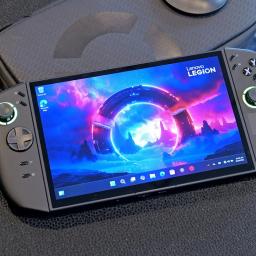 |
by Sam Rutherford on (#6ZT5H)
At the beginning of the year, Lenovo gave us an early design preview of its next flagship gaming handheld - the Legion Go 2. Today, at IFA 2025, the company is fleshing out the rest of the system with more details regarding its specs, price and availability.In terms of its overall appearance, not much has changed on the outside of the Legion Go 2. It has the same general shape and detachable controllers as the preview model, alongside an 8.8-inch OLED with a variable 144Hz refresh rate and VESA HDR TrueBlack 1000 certification. Lenovo has kept the ability to use the right controller as a vertical mouse (aka FPS mode) when paired with the handheld's included puck/stand. And as before, you still get Hall Effect joysticks, a built-in touchpad and kickstand and dual USB 4 ports.Sam Rutherford for EngadgetThe only major change from what we saw in January is slightly different paint colors on elements like its shoulder buttons. That said, I do appreciate that unlike a lot of its rivals (aside from the Steam Deck), Legion Go 2 still comes bundled with a case, just like its predecessor. On the flipside, one thing I wish Lenovo had changed is the detachment process for Legion Go 2's controllers. Like before, you can press a button in back before sliding each joypad off a small hidden rail. And while it works, after using the new magnetic system for the Switch 2's Joy-Con, doing the same thing on the Legion Go 2 just feels clunky.Meanwhile, the Legion Go 2's internals are where most of its upgrades have gone. The handheld can now be equipped with up to an AMD Ryzen Z2 Extreme chip, 32GB of RAM and 2TB of PCIe Gen 4 storage. And if that's not enough, there's also a microSD card reader. But perhaps the most tantalizing improvement may be its battery life, as the Legion Go 2 comes with a 74Whr battery that's 50 percent larger than the 49.2 Whr cell in the original.Unfortunately, I only had a brief time with the demo unit and as it didn't have a lot of games already installed (especially more resource-intensive ones), so I couldn't really gauge how much better its performance was compared to the original model. However, I did notice that Lenovo's Legion Space app felt much snappier and more polished, though it probably won't be as seamless as the native game integration and new UI that's coming on the ROG Xbox Ally.All told, the Legion Go 2 is shaping up to be a more refined, powerful and longer-lasting follow-up while retaining pretty much every major good feature from its predecessor like a big OLED screen, detachable controllers and solid connectivity. Granted, it's still quite chunky even with its curvier and more streamlined design, but that was always going to be the case considering its large 8.8-inch display. So if you can handle a Windows-based handheld (sorry SteamOS fans) that's on the heftier side, this is one worth keeping an eye on.Sam Rutherford for EngadgetBut here's the potential catch: the Legion Go 2 may be substantially more expensive too. It's expected to go on sale sometime in October starting at $1,049, which is a significant jump up from the $700 base price of the original (let alone what it's going for now, which can be as low as $550 depending on discounts). And that figure is likely for a model with a Ryzen Z2 chip, which means anyone who wants one with a more powerful Z2 Extreme processor will need to keep some wiggle room in their budget. So while I appreciate how Lenovo is chasing big performance on a portable gaming machine, the Legion Go 2's price has me appreciating more affordable handheld rivals like the Steam Deck even more than I already do.This article originally appeared on Engadget at https://www.engadget.com/gaming/pc/lenovo-legion-go-2-hands-on-powerful-upgrades-but-with-an-even-higher-price-060052114.html?src=rss
|
 |
by Lawrence Bonk on (#6ZT5J)
Lenovo just announced some new gaming products at IFA, including the Legion Pro 7 laptop. The specs here are impressive. The laptop ships with AMD's newest Ryzen 9 9000 HX series processors and options go all the way up to the Ryzen 9955HX3D.The Windows 11 computer also features NVIDIA GeForce RTX GPUs and purchasers can go up to the RTX 5080. There's a 16-inch 240Hz OLED panel with a 0.08ms response time, which should make for some glorious gaming sessions.LenovoIt can be outfitted with up to 2TB of storage and up to 32GB of RAM. It also incorporates the company's Coldfront thermal technology to keep things cool, which in turn lets gamers "run the highest-demand games at the highest settings." The Legion Pro 7 will be available this November and prices start at $2,400.The company also announced the LOQ Tower 26ADR10 desktop. The specs here are impressive, as the computers are powered by AMD Ryzen 8000 series processors and NVIDIA 50-Series GPUs. It can be topped off with up to 64GB of RAM and 4GB of SSD storage. It'll be available later this month, with a starting price of $1,000.LenovoLenovo even announced a few new gaming monitors at IFA, all of which offer multiple connection options and speedy refresh rates. They will be available in October or November, depending on which model is selected, with prices ranging from $700 to $1,100.This article originally appeared on Engadget at https://www.engadget.com/gaming/pc/lenovos-new-legion-pro-7-gaming-laptop-can-be-outfitted-with-up-to-a-geforce-5080-gpu-060017519.html?src=rss
|
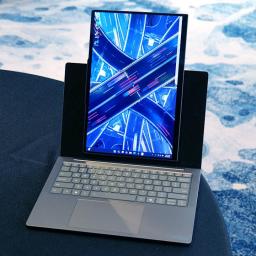 |
by Sam Rutherford on (#6ZT5K)
Lenovo is no stranger to laptops with funky displays. The company has made a notebook with a tri-fold screen, one with a rollable panel and multiple systems with flexible displays. But this year at IFA, Lenovo is testing out yet another new design with its latest concept laptop, and this time it may have created the ultimate doomscrolling machine.Its official name is the ThinkBook Vertiflex Concept and when it's closed, it looks almost exactly like a traditional 14-inch clamshell laptop. But if you look closer, you'll notice that its screen has a secret feature: the ability to rotate 90 degrees into portrait mode. This means you can switch to a taller aspect ratio for tasks like coding, editing photos and videos, or simply browsing your favorite vertically-oriented social media app.Naturally, to enhance its portrait mode capabilities, Lenovo included support for pairing the laptop with your phone via its Smart Connect app, which allows you to mirror or extend the latter's display on a bigger screen or quickly transfer files just by dragging and dropping. In a lot of ways, the Vertiflex Concept feels like the laptop version of one of LG's last phones - the LG Wing - while also sharing a lot of similarities with TVs like the rotating Samsung Sero. And given the continued rise in popularity of vertical photos and videos on social media, it's actually kind of a surprise that it's taken a mainstream PC maker this long to create a laptop like this.On a more practical level, I really appreciate that even with a rotating display, it doesn't feel like there's much of a penalty when it comes to added heft or thickness. The Vertiflex Concept weighs just three pounds and measures 0.7 inches thin, which isn't far off from what you'd get from a typical 14-inch ultraportable. And while Lenovo hasn't provided much in the way of hardware specs (this is a concept device after all), I noticed that the laptop does feature a healthy number of connectivity options, including two USB-C ports, one USB-A connector, a full-size HDMI jack, 3.5mm audio and a microSD card reader.Now, Lenovo has shown off more concept devices than practically any other major OEM in recent history, so of course, the Vertiflex wasn't the only prototype the company had on display for IFA 2025. There was also the Smart Motion Concept, but that felt less impactful because instead of being a standalone product, this thing is merely a laptop stand. It uses the sensors on whatever it's connected to to track your face and automatically reposition your laptop's screen in the right position.The Lenovo Smart Motion Concept and the case for its optional gesture control ring. Sam Rutherford for EngadgetThe idea is that if you're making a presentation, the stand allows your laptop to better keep your face in frame while also making sure its mics and speakers are pointed in the optimal direction. Alternatively, if you'd rather control the stand yourself, the device can be paired to a ring with gesture support. Finally, Lenovo says the Smart Motion concept also has some features to do things like help you maintain ergonomically friendly postures.However, as both products are experimental devices, there's no word on whether Lenovo will turn these into proper retail offerings. But if either the Vertiflex or Smart Motion concepts strike your fancy, you might want to say something (maybe on social media for the social-media focused laptop) to give Lenovo a bit of extra encouragement.This article originally appeared on Engadget at https://www.engadget.com/computing/laptops/lenovos-latest-laptop-concept-might-be-the-ultimate-doomscrolling-machine-060000162.html?src=rss
|
 |
by Mariella Moon on (#6ZT4B)
Warner Bros. Discovery has filed a lawsuit against popular AI image generator Midjourney, accusing it of stealing and exploiting its intellectual properties. The complaint revolves around the AI tool's ability to generate images and videos of Warner Bros.' popular fictional characters, including Superman, Batman, Wonder Woman, Scooby Doo, Bugs Bunny and his friends from Looney Tunes. "Midjourney thinks it is above the law," the company wrote in its lawsuit. It said that the image generator sells a commercial subscription service powered by AI technology that was illegally trained using its copyrighted works.The company argued that Midjourney has the technology to prevent users from generating images of the characters it owns. It apparently refused to generate videos based on Warner Bros.' properties when it first launched its video model. But within the past couple of weeks, it allegedly removed those protections and told its users that they would encounter "fewer blocked jobs." The ability to generate Warner Bros.' characters are a clear draw for its subscription service that costs $10 to $120 a month, the media conglomerate said. "It is hard to imagine copyright infringement that is any more willful than what Midjourney is doing here," the plaintiff added. "Midjourney has prioritized and sought to preserve the hundreds of millions of dollars it earns annually from its service by doubling down on its theft of copyrighted works."In the complaint, the company gave several examples of Midjourney-generated images and video stills next to images and screencaps of its movies and shows. The image above, for instance, shows Midjourney's output from the prompt "Batman, screencap from The Dark Knight." next to actual promotional materials from the Christian Bale-led movie. Further, generic prompts like "classic comic book superhero battle" could lead to output with WB characters even if they're not specifically mentioned.Midjourney is already facing a copyright infringement lawsuit filed by Disney and Universal Studios back in June. They accused the AI service of "help[ing] itself to countless" copyrighted works to train its models and for infringing on their copyright by allowing users to generate images of characters from Star Wars, Shrek, The Simpsons and Despicable Me, among other properties.Warner Bros. Discovery is now asking the court for statutory damages of "up to $150,000 per infringed work by virtue of Midjourney's willful infringement." We've reached out to Midjourney and will update this post when we hear back.This article originally appeared on Engadget at https://www.engadget.com/ai/warner-bros-discovery-is-suing-midjourney-for-copyright-infringement-035850831.html?src=rss
|
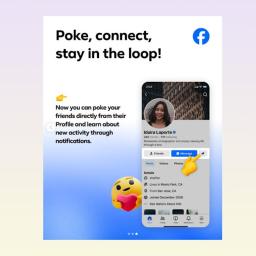 |
on (#6ZT22)
Meta currently has lots of priorities Mark Zuckerberg likely never would have imagined back in the early days of Facebook. The company has pivoted from social networking to the metaverse and, most recently, to AI. But somehow, one of its earliest - and most useless - features has not only survived but is apparently getting a revamp. I'm talking, of course, about the poke, which Meta is once again trying to revive.The company is making the storied feature easier to find by adding pokes back to user profiles in the Facebook app, according to a post it shared on Instagram. And you can track all poking-related activity between you and your friends at facebook.com/pokes. It even looks like there's a Snapchat-streak like aspect where different emojis appear based on how many pokes have been exchanged.Just in case you weren't on Facebook two decades ago, "poking" was something of a novelty in the early days of the social network. At the time, there weren't that many features for interacting with your friends. You could leave comments on their profile and ... you could "poke." The feature never really did anything, but depending on who it came from it was considered something between creepy or flirty. As Meta notes in its Instagram post, poking never really went away, but it was de-emphasized over the years and has been largely forgotten by users.But the company has for some reason been trying to get poking to make a comeback for a while now. Meta said last year the feature was "having a moment" and that there had been a 13x spike in pokes after the company began surfacing the feature in the Facebook search bar. Now, it seems Meta is trying to build even more momentum for it, presumably for the current generation of younger Facebook users.Mark Zuckerberg said earlier this year he wants to bring back more "OG" Facebook features like... being able to find content posted by your actual friends. And it's hard to get more "OG Facebook" than poking. Meta has also been on a years-long mission to win over "young adults," so it might see the jokey feature as a way to appeal to a generation used to taking their Snap streak extremely seriously.
|
 |
by Anna Washenko on (#6ZSZT)
The new Street Fighter movie has been given a release date of October 16, 2026. Kitao Sakurai is directing the project and a few generic plot details have been disclosed. The story will be set in 1993, a nod to the year Street Fighter II was released in arcades, and will have familiar characters from the game uncovering "a deadly conspiracy" in the midst of all their street fighting.It seems safe to expect a fair bit of camp in a Street Fighter project, and that bears out in some of the casting. Andrew Koji will play Ryu; he's had several past action roles such as Bullet Train and TV series Warrior, so that feels like a solid choice. Noah Centineo is taking a break from his work in Netflix rom-coms (notably To All the Boys I've Loved Before and its sequels) to play Ken. Newcomer Callina Liang, who only has a few credits to date, will play Chun-li. David Dastmalchian will be filling the great Raul Julia's shoes (and oversized hat) as M. Bison.Then things really get wacky. Curtis Jackson (who you know as rapper 50 Cent) is playing Balrog and country artist Orville Peck is Vega. Jason Momoa has been cast as Blanka, while WWE wrestler Cody Rhodes has even been chosen to play Guile. This could be absolute gold or absolute trash or possibly both at the same time.This article originally appeared on Engadget at https://www.engadget.com/entertainment/tv-movies/the-new-street-fighter-movie-lands-in-theaters-next-october-222724911.html?src=rss
|
 |
by Anna Washenko on (#6ZSZW)
The White House hosted several tech and AI leaders at an event today centered on teaching artificial intelligence in US schools. Many of the big tech companies - including Amazon, Google, Microsoft, OpenAI and Anthropic - have already issued press releases with their commitments to a pledge from the White House to help "foster early interest in Al technology, promote Al literacy and proficiency, and enable comprehensive Al training for parents and educators." The business commitments include things like cash prizes for students and teachers who use AI in educational ways, and cheap or free access to the companies' AI tools, trainings and certifications. First Lady Melania Trump hosted the gathering.That sounds fine and dandy on the surface. Understanding AI and the limits of what it can and can't do are already important as industries try to adapt to the technology. But considering the current administration has been actively trying to dismantle the Department of Education for being too woke, it seems doubtful that this is going to be a thoughtfully planned or well-reasoned rollout that has the best interests of students at heart. It's unclear if any actual teachers were consulted in the development of these initiatives, or asked for suggestions on how best to prepare students for the sudden rise of AI.For the schadenfreude fans out there, it appears that Trump's former BFF Elon Musk wasn't invited to today's gathering of tech leaders. However Musk insists that he was asked and just couldn't attend. Sure.This article originally appeared on Engadget at https://www.engadget.com/ai/big-tech-signs-on-to-white-house-plan-for-ai-education-in-us-schools-212646999.html?src=rss
|
 |
by Sam Chapman on (#6ZQQ1)
ExpressVPN has tripled its subscription options by switching to a tiered pricing structure, effective today. The new system includes three levels of service, the cheapest offering basic VPN service and the others adding extra features. Each one of those levels - Basic, Advanced and Pro - can be purchased for monthly, yearly or two-year durations. In total, you've now got nine different options for subscribing to ExpressVPN. The company also says legacy plans will remain active "for now," and current customers won't be downgraded. The change is similar to the approach already used by rivals like NordVPN and Surfshark. Previously, ExpressVPN locked feature offerings to the duration of the plan, so the only way to get the full suite of features was to subscribe for 24 months. Now, while longer-term subscriptions will still offer discounts, features depend on your level of subscription instead of how long it lasts. The new tiers roll in some features that were previously part of ExpressVPN's Identity Defender suite, including identity monitoring, credit reports and data removal services. New types of plans will also bump the number of allowed simultaneous connections to as high as 14. Here's what you'll get with each tier. ExpressVPN The Basic plan comes with "core VPN functionality," which includes the Lightway protocol, the Network Lock kill switch and split tunneling on Windows, Android and macOS 10 and below. Basic users will also have access to the blockers for ads and malicious sites, though not the tracker blocker or parental controls. A Basic subscription can be used on 10 devices at once and will cost $12.99 for a month, $74.85 for a year and $97.72 for two years. The Advanced plan raises the device limit to 12 and adds the blockers and parental controls, plus the ExpressVPN Keys password manager. It also gives you three days of eSIM service and adds the Identity Defender features - leak alerts, $1 million of identity theft insurance, data removal and credit monitoring. As was already the case, those ID protection features are available only to users in the United States. An Advanced plan will cost $13.99 for a month, $89.85 for a year and $125.72 for two years. The one-year and two-year plans are both cheaper than the same duration used to cost. Advanced subscribers also get five days of eSIM service and a discount coupon for between 25 and 50 percent off an ExpressVPN Aircove router (it's not currently clear how the exact discount will be determined). Although Basic and Advanced users can pay extra (between $3.99 and $8.99) for a dedicated IP address, it comes standard on a Pro subscription. Pro users additionally get monthly credit reports and data removal, 14 simultaneous connections and an Aircove discount between 50 and 75 percent. A Pro plan costs $19.99 for a month, $134.95 for a year and $209.72 for two years. What ExpressVPN tiered pricing means for VPN shoppers Ultimately, I don't think this new approach will change much about the experience of using ExpressVPN. It's not introducing any new features; I already touched on everything here in my recent ExpressVPN review, so the only difference is how much you'll pay to access the perks. The best news for consumers is that ExpressVPN is now available for significantly cheaper than before. A two-year Basic plan costs about 30 percent less than a two-year subscription used to - though a one-year basic plan is still more expensive than a comparable subscription to Proton VPN or Surfshark. I'm happy to say a Basic subscription is about as strong as ExpressVPN has always been, only missing a few peripheral features. We've recently overhauled our ranking of the best VPNs, including the new information from ExpressVPN - check out the full list in the link. Update, September 4, 2025, 5:03PM ET: This story has been updated to add a statement from an ExpressVPN representative on the features of the Basic plan. This article originally appeared on Engadget at https://www.engadget.com/cybersecurity/vpn/expressvpn-switches-to-multi-tiered-pricing-with-more-feature-options-130016633.html?src=rss
|
 |
by Ian Carlos Campbell on (#6ZSXH)
Sesame Street creator Sesame Workshop and YouTube have announced a new "extended partnership" that will bring episodes of the iconic children's show to the platform and a series of workshops for creators on "how to create content that is entertaining while also promoting learning." This new YouTube partnership joins an existing Netflix deal to stream new episodes of Sesame Street starting in November.According to YouTube, it'll now have a catalog of "hundreds of full episodes" of the show, on top of "content created especially for the YouTube audience" featuring beloved Sesame Street characters. The fact that Sesame Workshop will help train the next generation of kid-friendly entertainers as part of the deal is also a direct acknowledgment that some children know Ms. Rachel before Big Bird. Of course, Sesame Street becoming even more of a presence on the platform fits larger trends. YouTube has firmly established itself as a home for kids entertainment and educational content, and that doesn't seem like it'll change anytime soon.With distribution deals with Netflix and YouTube, Sesame Street seems like it's in a much more stable position than it was previously. The future of the series and its availability through free public broadcasters seemed uncertain after Warner Bros. Discovery opted to end its partnership with Sesame Workshop in 2024. As a beneficiary of government funding, cuts to public media made by the Trump administration also impact Sesame Street. These new partnerships guarantee there'll still be multiple ways to watch the show for free, and it might even reach new audiences in the process.This article originally appeared on Engadget at https://www.engadget.com/entertainment/tv-movies/sesame-streets-new-partnership-with-youtube-will-bring-hundreds-of-full-episodes-to-the-video-platform-203245293.html?src=rss
|
 |
by Anna Washenko on (#6ZSXJ)
Netflix has shared a pair of updates about its animated Tomb Raider show. The second season of Tomb Raider: The Legend of Lara Croft will air on the streaming service on December 11. However, that second season will also be the final one for the project. Legendary Television is behind the show, which premiered in October 2024 on Netflix and stars Hayley Atwell of MCU fame as the titular Tomb Raider.If you simply can't get enough of Lara and her adventures in archeology, you have other options on the way. For viewing, Amazon will begin filming in January for a live action take on the series. Although there's no release window for it yet, we recently learned that Game of Thrones actor Sophie Turner will play the lead. And for gaming, although Crystal Dynamics recently announced some layoffs, it is still working on a new Tomb Raider title.This article originally appeared on Engadget at https://www.engadget.com/entertainment/streaming/netflixs-animated-tomb-raider-series-is-ending-with-its-second-season-193502328.html?src=rss
|
 |
by Sam Chapman on (#6ZSV0)
A new peer-reviewed study alleges that 18 of the 100 most-downloaded virtual private network (VPN) apps on the Google Play Store are secretly connected in three large families, despite claiming to be independent providers. The paper doesn't indict any of our picks for the best VPN, but the services it investigates are popular, with 700 million collective downloads on Android alone.The study, published in the journal of the Privacy Enhancing Technologies Symposium (PETS), doesn't just find that the VPNs in question failed to disclose behind-the-scenes relationships, but also that their shared infrastructures contain serious security flaws. Well-known services like Turbo VPN, VPN Proxy Master and X-VPN were found to be vulnerable to attacks capable of exposing a user's browsing activity and injecting corrupted data.Titled "Hidden Links: Analyzing Secret Families of VPN apps," the paper was inspired by an investigation by VPN Pro, which found that several VPN companies each were selling multiple apps without identifying the connections between them. This spurred the "Hidden Links" researchers to ask whether the relationships between secretly co-owned VPNs could be documented systematically.Starting from the list of the most-downloaded VPNs on Android, the researchers compiled data from each VPN's business paperwork, web presence and codebase and sifted through it for connections. Primarily through identifying suspicious similarities in the code, they were able to sort 18 VPN apps into three groups.Family A consists of Turbo VPN, Turbo VPN Lite, VPN Monster, VPN Proxy Master, VPN Proxy Master Lite, Snap VPN, Robot VPN and SuperNet VPN. These were found to be shared between three providers - Innovative Connecting, Lemon Clove and Autumn Breeze. All three have all been linked to Qihoo 360, a firm based in mainland China and identified as a "Chinese military company" by the US Department of Defense.Family B consists of Global VPN, XY VPN, Super Z VPN, Touch VPN, VPN ProMaster, 3X VPN, VPN Inf and Melon VPN. These eight services, which are shared between five providers, all use the same IP addresses from the same hosting company.Family C consists of X-VPN and Fast Potato VPN. Although these two apps each come from a different provider, the researchers found that both used very similar code and included the same custom VPN protocol.If you're a VPN user, this study should concern you for two reasons. The first problem is that companies entrusted with your private activities and personal data are not being honest about where they're based, who owns them or who they might be sharing your sensitive information with. Even if their apps were all perfect, this would be a severe breach of trust.But their apps are far from perfect, which is the second problem. All 18 VPNs across all three families use the Shadowsocks protocol with a hard-coded password, which makes them susceptible to takeover from both the server side (which can be used for malware attacks) and the client side (which can be used to eavesdrop on web activity).Ultimately, a VPN provider being dishonest about its background and a VPN client running on slapdash infrastructure are symptoms of the same problem: these are apps designed to do something other than keep you safe online. Since all 18 were listed as unrelated products, it's also clear that app stores are not an effective line of defense. The "Hidden Links" paper makes it all the more imperative to never download a free VPN without vetting it first, and to only use free VPNs that are supported by paid subscriptions, like Proton VPN.This article originally appeared on Engadget at https://www.engadget.com/cybersecurity/vpn/researchers-find-alarming-overlaps-among-18-popular-vpns-191828342.html?src=rss
|
 |
by Ian Carlos Campbell on (#6ZSV1)
Honda is preparing to announce its first electric motorcycle with fast charging, based on a new teaser video the company shared on Instagram. The video shows off the new e-motorcycle on test rides in Europe and teases the date, September 16, when Honda will presumably introduce it. Plans to expand Honda's lineup of electric motorcycles have been in the works since at least 2022, when the company announced it would release "10 or more" e-motorcycles by 2025.The new motorcycle is under a wrap of black and white camouflage in the video, but Electrek writes that it shares a striking resemblance to the "EV Fun Concept" motorcycle Honda introduced at EICMA 2024, a motorcycle trade show in Milan. At the time, Honda said the boxy concept was designed to offer "performance equivalent to a mid-sized internal combustion engine (ICE) motorcycle" and be compatible with CCS2 quick chargers, an EV fast charging standard in Europe. It also has "a cruising range of over 100km," according to Honda.HondaLeaning on fast charging is one way the company could address possible range issues on the motorcycle. An electric motorcycle naturally offers less room for batteries than electric cars do. Honda's video doesn't get into any of those nitty gritty details, so we'll have to wait until September 16 to know for sure.One thing that does seem certain is the e-motorcycle's regional availability. Based on the fact the video was shared on Honda's UK Instagram page and specifically mentions it was "tested on European streets," it seems highly unlikely the motorcycle will be available outside of Europe and the United Kingdom.This article originally appeared on Engadget at https://www.engadget.com/transportation/evs/honda-teases-its-first-full-size-e-motorcycle-with-fast-charging-185116652.html?src=rss
|
 |
by Lawrence Bonk on (#6ZSV2)
LEGO just revealed the Star Wars Ultimate Death Star set, which is a massive beast that includes over 9,000 pieces. The company says it's the largest LEGO Star Wars set ever made. It's also the most expensive LEGO set ever, Star Wars or not. It costs a whopping $1,000.It may set you back around a month's rent, but just look at this thing. It's a legit monster. The set ships with 38 minifigures, including characters like Luke Skywalker, Darth Vader and Emperor Palpatine. It also comes with a stormtrooper figure in a hot tub, which is a nod to the LEGO Star Wars video games.LEGOIt's not a full globe, like the actual Death Star. It's more of a cross-section of the interior. This lets collectors recreate various locations from the movies, like the trash compactor, Palpatine's throne room and Princess Leia's jail cell. There's also a tractor beam control unit, a shuttle hanger and more.This is just the latest high-priced LEGO Star Wars release, proving that there's a real market for this stuff. There's a 6,000 piece recreation of the first ship from The Mandalorian and a detailed version of Luke Skywalker's Landspeeder.While this is the most expensive LEGO set ever made, it's not the largest. The Eiffel Tower recreation includes over 10,000 pieces and costs $630.This article originally appeared on Engadget at https://www.engadget.com/entertainment/tv-movies/the-lego-ultimate-death-star-set-includes-over-9000-pieces-and-costs-1000-183556661.html?src=rss
|
 |
by Anna Washenko on (#6ZSV3)
Belkin unveiled several new products today at IFA 2025. Its lineup included a wall charger and car charger that will be available starting this month, plus four entries in its SoundForm audio collection. But the standout item from the consumer products brand is its new Qi2 25W wireless charging puck.The UltraCharge Magnetic Charger 25W promises to power an iPhone from zero to 50 percent battery in just 30 minutes. It also has some clever design choices, such as a kickstand so you can charge a phone on a tabletop and still have the screen be visible. The kickstand is collapsible and could also be used as a PopSocket-style phone grip, although the puck's own charging cable is 6.6 feet, so you can't wander too far while using it. The charger also boasts Belkin's ChillBoost passive cooling tech to reduce heat buildup and protect the battery. The UltraCharge Magnetic Charger 25W will be available in October 2025, and although its US prices haven't been set, the UK retail cost is 30.The zippy Qi2 charging standard has been rolling out to more and more mobile devices this year. Several Android brands, which had historically not offered built-in support for that standard, have even been jumping on the Qi2 bandwagon.This article originally appeared on Engadget at https://www.engadget.com/mobile/smartphones/belkin-unveils-qi2-magnetic-charger-at-ifa-2025-180647711.html?src=rss
|
 |
by Andre Revilla on (#6ZSV4)
TCL has announced the QM9K, its latest flagship QD mini LED television series. The QM9Ks will be the first panels in the industry to feature Gemini on Google TV, a new feature that we first learned about at the start of this year.TCL/GoogleUsing the standard "Hey Google" voice prompt, viewers will be able to find a movie or TV show, ask questions using natural language about any topic and even control smart home products that are synced through Google Home. Google TV on the QM9K also supports the creation of custom AI screensavers based on descriptions or prompts provided by users.The TVs will feature an mmWave sensor - a form of radar used to detect if a person is in front of the panel - that will wake the devices, allowing users to engage with Gemini completely hands-free. Users will have the option of customizing distance settings and hours of operation for the wake sensor.Aside from breaking new ground in software, the QM9K series features a "Zero Border" edge-to-edge WHVA panel, which promises excellent color accuracy and a bezel-less design.The TVs have up to 6,000 precise dimming zones for deep contrast - up to 57 percent more than on the QM8K, the other contenders in TCL's "Ultimate Series." The QM9K is set to deliver up to 6,500 nits of peak brightness in HDR, a 30 percent increase over its predecessor. The panels run from 65" to 98", and audio by Bang & Olufsen rounds out the premium sets.The TCL QM9K will be available at Best Buy and select regional retailers later this month.This article originally appeared on Engadget at https://www.engadget.com/ai/the-first-tvs-with-gemini-built-in-arrive-later-this-month-175029927.html?src=rss
|
 |
by Lawrence Bonk on (#6ZSRR)
Google's Circle to Search tool just got a bit more useful, as it can now continuously translate text while scrolling. Until now, people had to restart the process every time the content on the screen changed. The update ensures the translation feature will keep on ticking along.Google says this is great for getting "more context for social posts from creators who speak a different language" or when browsing "menus when you're booking restaurant reservations while traveling abroad." Just tap the "Translate" icon and look for the menu option "scroll and translate."This update not only keeps the translation tool going as you scroll, but it even keeps working when switching to another app. Google says "there's no interruption" in these cases, which sounds pretty darned useful to me.The update is rolling out now to Android users, but Samsung Galaxy devices are getting it first. Everyone else will have to wait a little bit.This is just the latest update for Circle to Search. The tool also now lets users conduct one-tap actions on phone numbers, emails and URLs.This article originally appeared on Engadget at https://www.engadget.com/ai/googles-circle-to-search-can-now-translate-text-as-you-scroll-171555663.html?src=rss
|
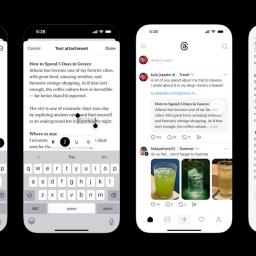 |
on (#6ZSRS)
That was fast. A week after a new feature for sharing long-form text was spotted in the Threads app, Meta is making the experiment official. Threads users will now be able to append text snippets of up to 10,000 characters to their posts in a feature Meta says is meant to support journalists and creators on the platform.As Engadget detailed last week, the feature is fairly basic for now. Selecting "text attachment" from the post composer opens up a simple text editor that has some formatting options. Once published to Threads, text attachments open either in a full-screen view on mobile or in a dedicated window on threads.com. If the post contains a link, the text attachment will also show a preview of the linked post at the end of text.That's notable as Meta has been trying to make links shared on Threads more prominent in an effort to give creators a boost on the platform. So far, there have been mixed results. While data shows engagement with links has been growing in recent months, Threads is sending very little traffic to websites overall.In a blog post, the company says the feature was inspired by user behavior as people frequently share "screenshots of longer content from books, articles, newsletters, podcast transcripts." The company also suggests that the feature could be used by authors and journalists who wish to share previews of their published works.While the 10,000 character limit technically means that authors and journalists could publish substantial amounts of writing directly on Threads, text attachments lack many features you'd expect from publishing tools. There are limited text formatting options, for example, and you can't embed media or do much else to break up big chunks of text. (A Meta spokesperson says highlighting and other formatting abilities are in the works.)Text attachments also aren't compatible with sharing to the fediverse, so followers from other ActivityPub services won't be able to see them even if you've opted in to fediverse sharing. But many users will likely still find the feature preferable to sharing lengthy multi-part Threads, which can be hard to follow and don't always all appear in a single view in the app or website.Meta says the feature is still in its early days and that it plans to add more functionality to text attachments in the future, along with more creator-focused updates.
|
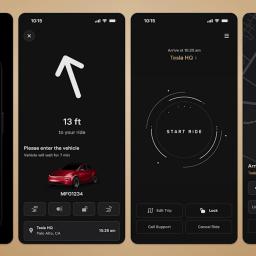 |
by Kris Holt on (#6ZSRT)
Tesla has made its iOS Robotaxi app available for all iPhone users to download as it expands service beyond a group of early access users for the first time. Beyond the current lack of an Android app (Tesla says one is on the way), there are a couple of things to bear in mind here. The company's proper robotaxis are currently only available in Austin, Texas. There's also a waitlist, so you won't be able to book a ride immediately.That said, it might not take folks on the waitlist too long to gain access to the service. Business Insider was able to start using it after about three hours.
|
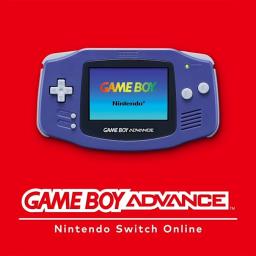 |
by Matt Tate on (#6ZSRV)
We're now several months into a brand new Nintendo generation, and waiting impatiently for important information such as the release date for Metroid Prime 4 and the whereabouts of the next 3D Mario game. But in the meantime, the company has been gradually updating its various retro console emulators on Nintendo Switch Online, with the latest being the Game Boy Advance.As spotted by Nintendo Everything, the 3.0.0 update to the GBA app adds button remapping, which is already possible with the N64 and SNES emulators. Accessible from the menu while playing a game, this allows you to mess around with controls if you're not happy with the default option, which admittedly does feel like something that should have been there from the beginning, but hey.Nintendo Everything adds that GBA games in the Nintendo Switch Online library are also now playable in 1080p in handheld mode on the Switch 2, which is hard to verify as there's no option to toggle video quality. Presumably any game booted on the newer hardware now just defaults to the higher resolution, where before they'd have been stretched from the original Switch's 720p maximum output. Of course, if the idea of playing a game from the early 2000s with pin-sharp clarity on a huge display appalls you, there is still the option of enabling a bordered small screen, as well as the classic feel" filter, which adds analog-y scanlines.Perhaps the most enjoyable addition of all, though, is the hidden original GBA startup screen, which you can activate by wiggling the analogue stick when booting the app. I tested this, and it is (obviously) delightful. Nintendo added a similar Easter egg to its GameCube app earlier this year.Unfortunately, the updated GBA emulator doesn't include any new game drops. The most recent title to join the service was Fire Emblem: The Sacred Stones back in April, which means the arduous wait for Nintendo to give us Mario Golf: Advance Tour continues. For me at least. Sigh.This article originally appeared on Engadget at https://www.engadget.com/gaming/the-switch-2s-latest-update-improves-the-consoles-gba-emulator-164340851.html?src=rss
|
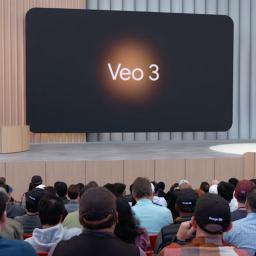 |
by Lawrence Bonk on (#6ZSN6)
The video-generation model Veo 3 has come to Google Photos, bringing even more AI tomfoolery to the platform. This allows users to do all sorts of wacky things. First and foremost, the pre-existing photo to video feature has been significantly improved. Google says that it can now be used to turn "still images into even higher-quality clips."There's also a tool called Remix that transforms photos into various styles, like anime drawings, comic book illustrations, 3D animations and more. This is a popular use case for image generators. You've probably seen those Studio Ghibli-inspired images across the internet.GoogleVeo 3 brings a new Collage tool that makes it easy to pick multiple photos and select a layout. There's even a simple image editor here that can be accessed directly from the collage maker.The Highlight tool creates visual montages based on search prompts, complete with music. There's also something called Cinematic Photos, which creates 3D renderings of pre-existing photos. Many of these tools can be combined to create unique images and videos.Google Photos with Veo 3 integration is available to US customers right now, and these tools can all be accessed in the new Create tab. Users only get a limited number of image generations each day, with more generations available for Google AI Pro and Ultra subscribers.This is just the latest platform that Google is sloppin' up with Veo 3. The company recently brought it to YouTube.This article originally appeared on Engadget at https://www.engadget.com/ai/google-photos-gets-veo-3-integration-bringing-in-even-more-ai-tools-160042831.html?src=rss
|
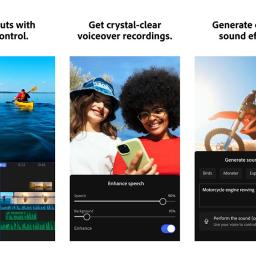 |
by Andre Revilla on (#6ZSN7)
Adobe is bringing Premiere to iPhone for free, putting its powerful video editor in the hands of content creators on iOS. The app will offer easy exporting to TikTok, YouTube Shorts or Instagram with a single tap.Users of the desktop application will be familiar with the multi-track timeline and the app's core functionalities. Content creators will be able to splice video footage, fine-tune down to individual frames and add unlimited video, text or audio layers including voiceovers. Premiere will be able to handle 4K HDR footage and will include Adobe Lightroom color presets to help add a polished look to your footage. The app can resize the final output for posting on any platform.Adobe says all these traditional features will be available for free with no ads, and videos will be exported without watermarks. This is somewhat unusual for a company that has all but perfected the monthly subscription model for its suite of tools that used to cost hundreds of dollars for a permanent license. The zero cost is likely driven by competition from other free video editing apps like CapCut, which shares a parent company with TikTok. Instagram also rolled out a free video editor this year.For an AI-powered upgrade, users can buy generative AI credits to create sound effects, apply speech enhancement, or access AI assets generated through Adobe Firefly. Extra cloud storage will also be available for purchase through the app, which may explain why the App Store lists in-app purchases of $7.99 per month or $69.99 per year.The Adobe Premiere: Video Editor app is available to pre-save on the App Store with an expected release date of September 30. Adobe says that Premiere for Android is also under development.This article originally appeared on Engadget at https://www.engadget.com/mobile/adobe-premiere-is-coming-to-ios-later-this-month-155019427.html?src=rss
|
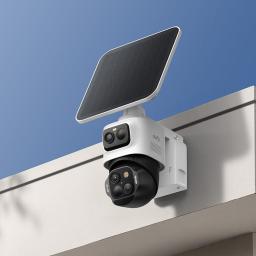 |
by Matt Tate on (#6ZSN8)
Eufy just introduced its latest outdoor security camera at IFA in Germany. The EufyCam S4 monitors your home using a fixed 4K wide-angle camera and a pair of 2K sensors that activate when a possible intruder is spotted and track them. Capable of auto-framing its subject, the main camera can pan, tilt and zoom in on a person as far as 164 feet away. It can also intelligently zoom out to ensure groups are kept in view.The EufyCam S4's stationary bullet camera has a 130-degree field of view, while the pan, tilt and zoom camera provides 360-degree tracking. With the three lenses working in unison, it's going to be pretty difficult for anyone to evade their gaze. The camera also has a dual motion detection system, combining radar and passive infrared (PIR) tech to distinguish between moving humans and vehicles. This way you should get fewer false alarms from the Eufy app.If the camera detects an intruder, red and blue warning lights are activated and a siren will trigger to warn them off. The camera can also be paired with Eufy's HomeBase S380 (sold separately), a smart security hub that uses the company's BionicMind AI tech for what it says is 99.9 percent accurate facial recognition. It also increases local storage to a sizable 16TB.The EufyCam S4 ships with a built-in 5.5 watt panel that can fully charge the camera with an hour of direct sunlight. The panel is detachable, so can easily be moved to an area where it'll drink up more rays, and you also get a rechargeable battery included so you're not exclusively relying on the sun.On its own, the EufyCamS4 costs $300 and will be available later this year. Bundles of multiple cameras and a HomeBase S380 will also be available.This article originally appeared on Engadget at https://www.engadget.com/home/smart-home/eufys-latest-security-camera-has-three-lenses-and-a-detachable-solar-panel-150014067.html?src=rss
|
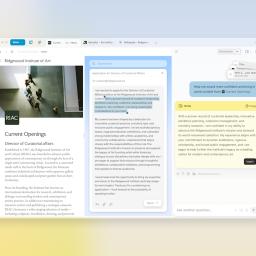 |
by Kris Holt on (#6ZSN9)
The Browser Company - the maker of the Arc and AI-centric Dia browsers - is set to have a new owner. Atlassian is buying it for around $610 million in an all-cash deal, which it expects to close in the second quarter of its fiscal year 2026 (i.e. by the end of the 2025 calendar year).According to The Browser Company, it will continue to operate independently as it builds Dia. A private beta for the browser started in June. Arc (a well-regarded browser on which the company has ended active development) and Arc Search will stick around, and a long-term plan for those will be revealed in the near future.Co-founders Josh Miller and Hursh Agrawal are staying on as CEO and CTO, respectively. Miller wrote in a blog post that they are looking to accelerate their ambitions by teaming up with Atlassian. "We chose Atlassian because their strengths complement our gaps," Miller wrote. "And most importantly, like us, they believe the browser is becoming the new operating system." The Browser Company plans to bring Dia to "to every platform faster than we could have previously imagined" in the coming months.Miller said the company had three conditions for any acquisition: to ensure it remained independent, that all of its team members still had a job and that its "vision for Dia remains at the center." He added that "a large part of why we chose Atlassian is values. Now more than ever. Not the kind you hang on a wall, but the ones you see in the work itself."Atlassian is the owner of productivity and enterprise services such as project management apps Jira and Trello (which has been buggy for me for over a year, for what it's worth). Last month, it reportedly laid off around 150 workers, many of whom were said to be in the customer service department, and was said to be planning to use AI to take over some of those former employees' tasks."Our vision is to make Dia the AI browser for work," Atlassian CEO Mike Cannon-Brookes said in a video announcing the acquisition. The team is designing Dia so it's "optimized for the SaaS [software as a service] apps where you spend your day; packed with AI skills and your personal work memory to unleash your potential; and built with trust and security in mind, so you can bring it to the office. An AI browser for your system of work."This article originally appeared on Engadget at https://www.engadget.com/big-tech/atlassian-is-buying-arc-maker-the-browser-company-for-610-million-145236236.html?src=rss
|
 |
by Lawrence Bonk on (#6ZSNA)
Hollow Knight: Silksong is officially available for purchase, after six long years of waiting. The anticipation is at a fever pitch. Fans have swarmed to Steam to purchase the game and, well, it looks like they overloaded the system and shut it down. The same thing seems to be happening to the Nintendo eShop and the Xbox Store.Multiple social media users and data from services like DownDetector are noting that the service is down for many people, with a massive spike in reports pretty much the moment Silksong became available. This could be a coincidence but it's probably not. Silksong is one of the hottest releases in recent memory.In any event, we've reached out to Steam and will update this post when we hear back or when the platform has returned. Congrats to those who already got their hands on the game.This is a developing story.This article originally appeared on Engadget at https://www.engadget.com/gaming/hollow-knight-silksong-fans-have-brought-down-steam-142116085.html?src=rss
|
 |
by Will Shanklin on (#6ZSHD)
TCL is showcasing a new phone at IFA 2025. A late entrant to the modern mobile market, the company tries to differentiate its devices with NXTPAPER eye-comfort screen tech. The new NXTPAPER 60 Ultra is TCL's first phone to feature the latest version of that technology, which it first introduced in a tablet at CES 2025.The idea behind NXTPAPER is to strike a balance between e-paper and OLED screens, alleviating eye strain without sacrificing color range or refresh rates. Its hardware-level features include blue light filtering, a matte anti-glare layer and flicker-free brightness control. One of its neatest aspects is Ink Mode, which can switch into an E Ink-like presentation with the press of a dedicated button. TCL says the 2025 version of the display tech (NXTPAPER 4.0) brings sharper detail, more accurate color and AI-driven eye comfort modes.TCLLooking beyond the eye-comfort features, the NXTPAPER 60 Ultra is a mid-range Android phone. It has a spacious 7.2-inch display with a 120Hz refresh rate with 1080p resolution. It's powered by a MediaTek Dimensity 7400 processor and 12GB of RAM. (An additional 12GB is available via virtual RAM.) The phone has a three-camera setup, including a 50MP periscope telephoto sensor. (That camera provides 3x optical zoom and 6x "lossless" zoom via digital trickery.) The phone has a 5,200 mAh battery.At least for now, the NXTPAPER 60 Ultra is only launching in Europe, Latin America and Asian markets. It will be available there later this month, priced at 499 for 256GB storage and 549 for 512GB.This article originally appeared on Engadget at https://www.engadget.com/mobile/smartphones/tcls-new-smartphone-uses-the-latest-version-of-its-eye-comfort-screen-tech-133041739.html?src=rss
|
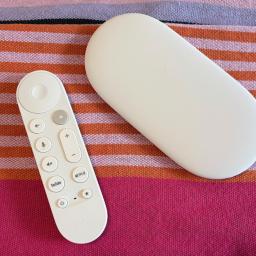 |
by Lawrence Bonk on (#6ZR2G)
A good streaming device can revamp an older TV for much less than it would cost to replace the set all together. One of our favorites in the Google TV Streamer 4K, and you can pick it up for 20 percent off right now. It's on sale for $80, which is close to a record-low price and a few dollars less than it was during Prime Day this summer. The TV Streamer 4K topped our list of the best streaming devices. It's a smartly-designed product that just works. We enjoyed the clean interface and the fantastic remote that ships with the device. The processor is speedy and this thing can stream content in 4K at 60FPS. It integrates with HDR, HDR10, HDR10+ and Dolby Vision. On the audio side of things, it supports formats like Dolby Digital and Dolby Atmos. It can even handle spatial audio, so long as you're wearing the Pixel Buds Pro earbuds. The interface includes a smart home control hub, which we praised in our official review. This lets users easily control smart lights and thermostats, among other gadgets. The TV Streamer 4K also offers voice control, which we found to be useful. There are only two minor knocks with this one. The original asking price is on the higher end, but this sale alleviates that concern. The unit also includes some fairly useless AI integration, but it's 2025 so what else is new? Follow @EngadgetDeals on X for the latest tech deals and buying advice.This article originally appeared on Engadget at https://www.engadget.com/deals/the-google-tv-streamer-4k-is-20-percent-off-right-now-183511702.html?src=rss
|
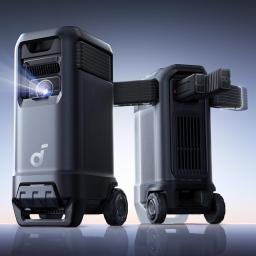 |
by Steve Dent on (#6ZSHE)
Anker took it's excellent Nebula X1 projector and said, "what if that but louder?" The result is the Soundcore Nebula X1 Pro that marries Anker's 4K, 3,500 lumen Google TV projector with a 160W Soundcore speaker, offering what should be an incredible outdoor entertainment machine.Marrying these products wasn't just a matter of jamming them into the same box. The subwoofer was set up to float inside the assembly on a spring-type system to avoid vibrating the laser-powered 4K video. And to get some semblance of soundstage, the 80W soundbar speakers fold out to the left and right of the projector, with two wireless satellites completing the 7.1.4 surround effect. It even supports Dolby Atmos, which the projector on its own doesn't do, while also offering IP43 protection from light rain and dust, another feature absent on the Nebula X1.AnkerOtherwise, it's the same excellent triple-laser, glass lens projector I tested last month that offers outstanding image quality, a simple automatic setup thanks to the motorized lens and surprising portability. Considering it's mean for outdoor use, it puts a lot of dedicated indoor projectors to shame in terms of brightness and color accuracy. When not beaming movies, the system can also be used in audio-only Bluetooth speaker mode.The Soundcore Nebula X1 Pro will launch on September 23rd on Kickstarter (at between $4,000 to $5,000), just as the Nebula X1 projector did. It will then come to retail a bit later, around March 2026. The company is also offering the opportunity to leave a $100 deposit and get $500 off.This article originally appeared on Engadget at https://www.engadget.com/home/home-theater/ankers-soundcore-nebula-x1-pro-is-the-ultimate-party-projector-130255687.html?src=rss
|
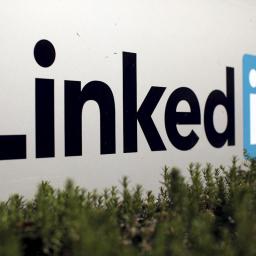 |
by Ian Carlos Campbell on (#6ZSHF)
LinkedIn will now require some users to verify their identity before they change job titles in an attempt to cut down on scams on the platform. The new identity verification rules will specifically apply to executives and recruiters who interact with job seekers or represent a company in one form or another.As part of these changes, LinkedIn says users who add or update their title to anything recruiter-related (recruiter, talent acquisition, etc.) will have to verify their workplace on their profiles. The same identity verification rules will apply to executives, as well, which LinkedIn says covers titles like "Executive Director, Managing Director, and Vice President." Verifying your workplace requires you to provide an official email address that uses your company's domain name. The new requirement only applies to people changing roles, existing recruiters and executives won't have to verify.LinkedInLinkedIn has offered similar verification tools to select companies upon request, but now the platform says it'll open up the option to every company with a LinkedIn page via a new "Premium Company Page subscription." A verified company should be easier to trust when paired with verified employees.While LinkedIn is best known as a home for thought leadership and a necessary evil in job hunts, it's also the site of a large amount of fraud. Scammers impersonate company employees to collect data from fake job postings or conduct elaborate investment schemes, as CNBC reported in 2022. LinkedIn has automated systems for weeding out fake accounts, and rolled out an earlier wave of anti-scam features focused on job postings in 2023, but this new system should offer even more security.This article originally appeared on Engadget at https://www.engadget.com/social-media/linkedin-will-require-recruiters-and-executives-to-verify-their-identity-to-cut-down-on-scams-130040435.html?src=rss
|
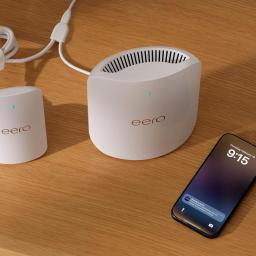 |
by Mariella Moon on (#6ZSEV)
Amazon has introduced a new eero product at IFA 2025, which can provide you with connectivity in case your home internet goes out. The new product called eero Signal connects to any USB-C-powered eero device on a network that supports Wi-Fi 6 and up. It's meant to be a cellular backup, available two versions: A 4G LTE one that will cost you $100 and a 5G one that will set you back $200. Signal can detect outages and automatically connect you to a cellular network with its multi-carrier eSIM that's already included with the price of the device. It also switches back to your home internet once it detects that it's back online. To note, Signal isn't meant for standalone use. It's only meant as a backup that requires an existing primary internet connection and will only work in a single location. The device was designed to keep you connected when you would've had no home internet otherwise. You will need an annual eero Plus subscription to be able to enjoy its benefits, though it's coming to eero Business as well. An annual eero Plus plan will set you back $99 a year for all its perks, including access to a VPN, an antivirus, a password manager and 10GB of backup data. If you live in a place that experiences frequent outages, you can get the new annual eero Plus 100 plan that will come with 100GB of backup data for $200 a year. This article originally appeared on Engadget at https://www.engadget.com/computing/amazon-launches-cellular-dongle-to-provide-backup-connectivity-for-eero-routers-123028654.html?src=rss
|
 |
by Mariella Moon on (#6ZSEW)
Google must pay $425 million to the plaintiffs of a class action lawsuit that accused the company of collecting users' data even after they've turned off a tracking feature, a federal jury has decided. The lead plaintiff sued Google back in July 2020, arguing that the company still harvested data even though it tells users they can disable tracking under Web & App Activity through its connection with other apps, such as Uber and Instagram. US District Judge Richard Seeborg then certified the lawsuit as class action, involving 98 million Google users and 174 million devices.The plaintiffs' lawyers asked for $31 billion in damages, but the jury only found Google liable on two of the three privacy violation claims. Google didn't violate the California Comprehensive Computer Data Access and Fraud Act and didn't act out of malice, the jury found. As a result, the jury concluded that the plaintiffs aren't entitled to any punitive damages.In a statement, Google spokesperson Jose Castaneda said that the decision "misunderstands how [their] products work." He added that the company's privacy tools give users control over their data and insisted that Google honors people's choice to turn off personalization. Castaneda said that Google plans to appeal.The company faced several similar privacy lawsuits in the past. Another 2020 lawsuit accused Google of tracking users in Incognito mode, and the company agreed to settle the $5 billion lawsuit in 2023. A year later, it admitted that it can indeed collect information in Incognito and promised to destroy billions of data collected from Incognito tracking to settle the complaint.This article originally appeared on Engadget at https://www.engadget.com/big-tech/google-ordered-to-pay-425-million-in-app-data-collection-lawsuit-120048799.html?src=rss
|
 |
on (#6ZSEX)
Since the start of last summer, DuckDuckGo has offered a handful of AI chatbots from OpenAI, Anthropic and others directly through its browser. And while it's mostly low-cost models like GPT-4o mini and Claude 3.5 Haiku on offer, the feature, Duck.ai, allows you to use those tools without sacrificing your privacy. As a service, that appears to have resonated with DuckDuckGo users, and now the company is reorienting its Privacy Pro subscription around access to more advanced models from those providers.The good news? The price of the service - either $10 per month or $100 billed annually - remains unchanged, and you still get all the previous perks included in the package. What is changing is the name. It's now simply known as the DuckDuckGo subscription, and, in addition to offering access to the company's own VPN, as well as its personal information removal and identity protection services, it allows you to use some of the latest models from OpenAI, Anthropic and Meta. The full list features GPT-4o, GPT-5, Sonnet 4.0 and Llama 4 Maverick. As before, any conversations you have with those chatbots through DuckDuckGo are anonymized and your data won't be used for training future systems."Today, we're expanding Duck.ai by giving DuckDuckGo subscribers access to more advanced AI models, covered by the same strong protections," said DuckDuckGo. "The base version of Duck.ai is not changing; it's still free to use, with no account necessary. We're just adding more models for subscribers."If you don't want to use the new AI perks, you don't have to; DuckDuckGo allows users to hide all the AI buttons found in its browser's search, desktop and mobile settings. That said, the company notes it's exploring the option of offering higher subscription tiers with access to even more advanced AI models in the future.This article originally appeared on Engadget at https://www.engadget.com/duckduckgos-subscription-now-offers-some-of-the-latest-chatbots-from-openai-and-anthropic-120000845.html?src=rss
|
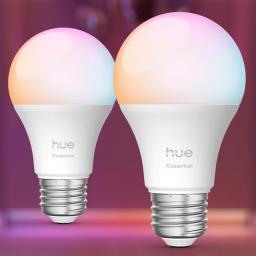 |
by Steve Dent on (#6ZSEY)
Hue just did its biggest product launch ever as part of IFA 2025 and a key product is the new entry-level Essential smart bulb lineup. Though still not as cheap as some products you can find on Amazon, it's designed to take on budget rivals like Govee and Aqara with bulbs starting under $20.The new range includes A19 bulbs, GU10 spots and strip lights with and without color options. Effectively, you're not losing a lot compared to the regular color/white bulbs. They still run on the same platform and offer Bluetooth out of the box along with extra features enabled when using a bridge or Matter-over-Thread.To highlight the differences, Hue released a feature comparison sheet. You can't dim the Essential bulbs as much, they offer a reduced range of whites (2200 to 6500K compared to 1000 to 20000K) and color quality is less accurate. The latter is arguably the most important feature for folks who use smart bulbs to sync with their TVs or require precise matching between bulbs.HueYou'll be able to buy the Hue Essential bulbs starting this month, with the new A19 bulbs priced at $25 individually or $60 in a four-pack. The Essential strip light arrives in December for $60 in a 5 meter length (16 feet) or $100 for 10 meters (33 feet). You can also grab the A19 bulb in a starter kit in the US starting at $80 for the Essential E27 2 pieces and Hue Bridge V2, up to $100 for the Essential E27 4 pieces and Hue Bridge V2.Another primary piece of Hue's smart lighting puzzle is the Hue Bridge Pro. It has a more serious black look compared to the white models of the past to signify the extra power. That includes five times the processing performance and 15 times the memory of the Hue Bridge V2 that came out 10 years ago.HueAlong with the extra power, the Huge Bridge Pro debuts a new feature called Hue Motion Aware. That transforms Hue Bulbs (including 95 percent of existing models) into motion sensors able to detect movement and trigger actions or security alerts.Hue says you can easily upgrade a current Hue Bridge "with just a few clicks," and Signify will release support for combining multiple Bridges into a single Bridge Pro by year's end. The Bridge pro arrives in North America in September 2025 for $90.Hue OmniGlow strip lightingJuanCruzDuranPhotographer for HueHue also refreshed its strip lighting with several new products including the flagship OmniGlow (starting at $140 for a 3 meter length and arriving in November), the first Hue strip with no visible hotspots via CSP tech to accent your decor with a seamless glow. It also introduced the Flux lineup with indoor, outdoor, ultra-bright and neon options (in sizes up to 10m) starting at $70 for 3 meters, for applications ranging from indoor accents to outdoor facades. Also new are the Festavia string lights that can be used for holiday decor or year round in a permanent model for rooflines, patios and balconies. Those start at $160 for 7m lengths or $120 for 9 meters for the permanent model with availability in September.Signify also introduced a new A19 bulb that can replicate the entire spectrum of daylight while offering 40 percent great efficiency compared to its predecessor. Finally, the company announced a Sonos partnership that will allow you to operates Philips Hue lights using voice controls, and eventually "integrate light and sound in new intuitive ways."This article originally appeared on Engadget at https://www.engadget.com/home/smart-home/hue-takes-on-cheaper-rivals-with-the-entry-level-essential-smart-bulb-lineup-110415932.html?src=rss
|
 |
by Steve Dent on (#6ZSC5)
Hue is best known for its smart lights, but recently the company ventured into home security with its Secure lineup of cameras. Now, parent Signify is releasing its first video doorbell, the Hue Secure, with several unique features it hopes will make it stand out against formidable competition from Nest and Amazon's Ring.To start with, the Hue doorbell comes with a 2K fisheye camera, more resolution than Nest and some of Ring's doorbell products, potentially offering more detailed video. Hue is also offering a 24-hour video history for free, letting you avoid paying for a subscription if you only want to keep a day's worth of clips. In addition, the camera can work with Google Home and Samsung SmartThings, along with Hue's own app. It won't be compatible with Apple Home at launch, but will be updated to work with it later. Signify will also add Matter support sometime this fall.HueAlong with 2.4GHz and 5GHz Wi-Fi compatibility, the Hue Secure video doorbell come with a Zigbee radio. That lets it pair with Hue lights, so you can set it up to automatically turn on other Hue lights (inside your foyer or outside the door, for instance) when someone approaches the front door. However, if you want a chime to compliment the Hue Secure by providing sound alerts when the doorbell rings, you'll need to buy the $60 Hue Smart Chime that's sold separately - as the new doorbell doesn't work with any third-party chimes for now.Hue's Security video doorbell arrives in October in North America, Europe and the UK for $170 (140). Signify will also release a new 2K wired camera in Europe that's an update to the original Hue security cameras. That model will cost 180 or 200 with a stand, with no word yet on US availability.This article originally appeared on Engadget at https://www.engadget.com/home/smart-home/hues-secure-video-doorbell-can-turn-on-hue-lights-when-someone-comes-to-the-door-100017068.html?src=rss
|
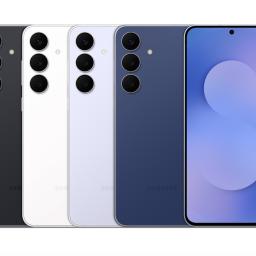 |
by Lawrence Bonk on (#6ZSC6)
Samsung just launched the Galaxy S25 FE smartphone at IFA. It's available right now, starting at $650. The handset is available in four colorways. This is a midrange member of the Galaxy S25 family, after the company released the S25, S25 Plus and S25 Ultra back in January and the ultra-thin S25 Edge in May. The base-level S25 starts at $800, so this is a slightly cheaper way to get in on all of that Galaxy action. This phone actually ships with the company's One UI 8 operating system. The other S25 models shipped with One UI 7, but have since begun receiving software updates to bring them up to speed. This introduces a refreshed user interface with new icons and better animations, more AI integration and improved split-screen performance. It features an Exynos 2400 CPU, which should get the job done but won't be quite as snappy as the Qualcomm Snapdragon 8 Elite that ships with the rest of the lineup. There's a 6.7-inch AMOLED screen with up to 1,900 nits of peak brightness. The camera system is decent, with a 50MP main camera, a 12MP ultra-wide lens and an 8MP telephoto lens. There's also a 12MP front-facing camera. Despite being a bit underpowered when compared to the rest of the lineup, the S25 FE still accommodates all of those fancy Galaxy AI bells and whistles. This includes the company's Generative Edit photo software, an on-device assistant and more. So this is a relatively affordable entryway into that world. This article originally appeared on Engadget at https://www.engadget.com/mobile/smartphones/samsung-launches-the-galaxy-s25-fe-at-ifa-2025-093026581.html?src=rss
|
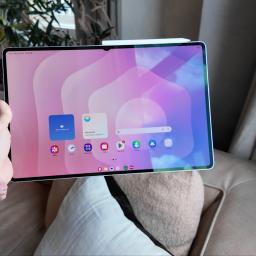 |
by Cherlynn Low on (#6ZSC7)
Someone recently asked me: Who even cares about Android tablets anymore? If that's you, you're probably feeling the same indifference towards premium Android tablets. Even Google has conceded it won't be making new tablets and seems to have already forgotten about the Pixel Tablet. But that's not stopping Samsung from releasing the 11th-generation Galaxy Tab S11 series, comprising the 11-inch standard model and 14.6-inch Ultra. The latter is the more interesting of the pair, as it's not only what Samsung says is its thinnest tablet ever, but also offers new Dex multitasking features and, of course, AI tools. Plus, in case you forgot, the company's hallmark S Pen stylus still exists, and has received yet another redesign alongside the launch of the series. These days, my stylus use is limited to the ones for e-paper writing tablets like the reMarkable Paper Pro and the Kindle Scribe, but I remain a huge fan of the S Pen. I've loved Samsung's stylus since my time as an Omnia II owner, back when it was like a mini retractable pointer that extended like old car antennas. The version accompanying the Tab S11 Ultra has a hexagonal shape to its grip that makes it more closely resemble a No. 2 pencil, and its nib has also been tweaked to be more conical. From my brief time with it at a hands-on session, the latest S Pen didn't feel remarkable. It's certainly a lot lighter than the reMarkable Paper Pro's Marker Plus. But despite its similarity to a No. 2 pencil, Samsung's new stylus didn't feel better to hold or write with than the Kindle Scribe's pen, which is a simple cylindrical piece. I actually like how smooth the latter's edges are, and both seemed to deliver similarly fluid and responsive writing. I didn't feel much resistance as I dragged the S Pen's nib across the Tab S11 Ultra's screen to scrawl out Hello Engadget." Cherlynn Low for Engadget Unlike some previous S Pens that had Bluetooth-powered special features like remote camera control, this version has no additional connectivity. It draws power from the tablet's screen like other EMR (electromagnetic resonance) tablets and won't need to be charged. Samsung did make it attach magnetically to the S11 Ultra, which can help prevent you misplacing it in a cafe, for example. But from previous experience, I can say that the magnets aren't strong enough to keep the S Pen on the tablet if you toss it in a purse or bag. You'll need a case with a dedicated holder to truly secure the stylus. Speaking of, Samsung has made some new covers and keyboards for the Tab S11 Ultra, since its pogo pins have been moved from the bottom edge to its rear. This means none of your old or existing Samsung keyboard cases will be compatible, and you'll have to buy the new version if you want to turn the S11 Ultra into a competent 2-in-1. Samsung improved the cases for its latest tablet, though, and it seems the repositioned pogo pins have allowed the company to make its origami covers a single piece instead of a two-parter. The new Pro keyboard case won't be available at launch, so you'll have to wait to get it and perhaps rely on a Bluetooth accessory in the meantime. Or you can get the Slim Keyboard, which doesn't have a trackpad. Once you get a working keyboard connected, you'll likely have a nice time getting work done on the S11 Ultra. That's thanks in large part to the improved Dex mode, Samsung's multitasking software for Android devices. The new tablet ships with One UI 8, which gets new multitasking features like Extended Mode and support for up to four dedicated customizable workspaces. The former basically lets you wirelessly extend your display to other screens, like another tablet or even a laptop or monitor, to simulate a dual-monitor setup. I didn't get to see this for myself yet, so I can't speak to the latency and ease of use, but the idea is nice in theory, and is something iPads can't do yet. You might not even need extra screens, though, since the Tab S11 Ultra's display is a roomy 14.6 inches, which Samsung says is its largest yet. It offers the vibrancy and brightness that's typical of the company's AMOLEDs, meaning colors are richly saturated and make for an enjoyable multimedia experience. Like recent models, the S11 Ultra's panel refreshes at up to 120Hz for smoother scrolling and animations, and has a fairly sharp resolution of 2,960 x 1,848. If you really care about numbers, then know that the Tab S11 Ultra gets up to 1,600 nits of brightness, as well. All this is powered by a 3nm MediaTek Dimensity 9400+ processor, which the company said is a first for its tablets and brings 20 percent improved CPU and GPU performance over the previous generation. The neural processing unit (NPU) also sees a jump of 30 percent, according to Samsung. That means AI tools like Writing Assist and Drawing Assist should be faster and smoother. Cherlynn Low for Engadget In addition to those tools, which help you adjust the tone of your messages or turn your rough sketches into full-fledged art, the Tab S11 Ultra will also support Google's Gemini Live so you can have more natural conversations with the assistant. Samsung is also rolling out a Galaxy AI overlay for its Notes and browser apps, allowing you to drag around a moveable panel on top of those windows for easier reference. Despite how I started this article, I've actually long been a fan of Samsung's Galaxy Tab S line. I love how thin and sturdy they are - they just feel like sharp gadgets to wield. And at just 5.1mm (0.2 inches) thin and weighing just 1.53 pounds (692 grams), the Tab S11 Ultra is impressively svelte. Holding it up with just one hand while I aimed my camera at it felt effortless, and despite measuring 8.2 x 12.8 inches, the tablet was relatively easy to maneuver. By the way, the S11 Ultra's bezels measure 5.2mm, meaning even the barely-there borders are thicker than the device. And in case you needed a comparison, the 13-inch iPad Pro from 2024 was also 5.1mm thin. The Tab S11 Ultra has a bigger screen while keeping that slim profile. It also is rated IP68 so it can withstand about the same amount of dust and water ingress as the average smartphone today. While I wasn't able to test the battery life of the Tab S11 and Tab S11 Ultra at the hands-on event, I think their respective 8,400mAh and 11,600mAh cells should provide ample runtime to get work done on the go. Samsung says they'll both last about 13 hours on a charge. I'll take this opportunity to point out that the Tab S11 is a much less premium device, with noticeably thicker bezels around its 10.9-inch screen. It supports Wi-Fi 6E, while the Ultra gets up to Wi-Fi 7, and it has a headphone jack if you still want one. The Ultra, meanwhile, does not have a 3.5mm audio socket. Cherlynn Low for Engadget In most other respects, the Tab S11 and its Ultra sibling share similar specs. Both have 13-megapixel rear cameras and 12MP front sensors, though the Ultra has an additional 8MP ultrawide setup. They support the redesigned S Pen, have in-screen fingerprint sensors, use the same processor, start at the same 12GB of RAM and go up to 2TB of storage, all while running Android 16. I'm truly intrigued and tempted by the Tab S11 Ultra's promise of portable productivity in a handsome package, but I simply don't use tablets in my life. My personal laptop is a Samsung Galaxy Book, and that feels like a suitable medium-screen to join my small screen (phone), big screen (TV) and tiny screen (watch). I don't need to throw a smedium screen into the mix. I already have a Kindle and a reMarkable Paper Pro that take the place of books and notebooks, too. That said, for the non-Apple people who use tablets as laptop replacements, artists who want to sketch in color or simply anyone who just likes a 15-inch thin and light touchscreen for whatever reason, the Galaxy Tab S11 Ultra should be a worthy option. It's just going to be quite the hefty investment at $1,200 to start. That's costlier than most laptops, and doesn't include accessories like keyboard cases or mice yet. The base Tab S11 goes for $800, which is also more expensive than the plethora of midrange laptops on the market, so you'll be paying a premium for portability. This article originally appeared on Engadget at https://www.engadget.com/mobile/tablets/samsung-galaxy-tab-s11-ultra-hands-on-really-thin-redesigned-s-pen-and-remember-dex-093015036.html?src=rss
|
 |
by Lawrence Bonk on (#6ZS9V)
Eufy just introduced a couple of new devices at the IFA conference in Germany, including something called the MarsWalker. This little doodad picks up robot vacuums and carries them up and down stairs. That's pretty neat, considering stairs are the bane of any robovac's existence.The company says the MarsWalker automatically recognizes common stair types, including straight, L-shaped and U-shaped. It transports the vacuum between floors and drops it off at the base station when needed. Eufy boasts that the device allows for "truly hands-free, whole-home cleaning while avoiding the cost of buying multiple devices."It uses four control arms that "dynamically adapt to stair structures," along with a track-drive system that "grips each step securely." The company notes that it has been designed to prevent slips.There are a couple of caveats here. First of all, we don't have the price yet. If this ends up being around the price of an actual robot vacuum, it might be better just to get two for a multi-story home. Also, it only works with a few Eufy models and no third-party devices. Still, it's cool to see robot vacuums finally adapting to stairs. It's been a slow road to get here. The MarsWalker will be released in the first half of 2026.EufyThe company also announced a new robovac at IFA which fully integrates with the MarsWalker. The Omni S2 includes an aromatherapy system, which is fairly novel, and adaptive wheels to clear thresholds like thick rugs. It'll be available in January, with a cost of $1,600.This article originally appeared on Engadget at https://www.engadget.com/home/smart-home/eufys-marswalker-allows-its-robot-vacuums-to-climb-stairs-083020319.html?src=rss
|
 |
by Anna Washenko on (#6ZS47)
Apple continues to seek a foothold in the artificial intelligence race, and its next effort could bring the company into web search. Mark Gurman at Bloomberg reports that Apple is building a search platform that it may incorporate into its AI-driven overhaul of Siri. Sources said the tool, internally called World Knowledge Answers, could also be added to the Safari web browser and the Spotlight smartphone search interface.Apple's efforts in AI have been under the microscope since the lackluster introduction of Apple Intelligence at WWDC 2024. Since then, the company appears to still be foundering, with its revitalized and AI-empowered Siri now not due to arrive until 2026. This proposed search tool would be part of that planned Siri re-launch next spring.Some core aspects of Siri are still up in the air. The company has reportedly trialed using Google's Gemini to power a version of the AI assistant, although it hasn't committed to using that approach. Considering an outside partnership for this critical feature is one path Apple could take to bolstering its AI offerings. CEO Tim Cook has also said the company is open to acquisitions to pursue its current roadmap. There were even rumors that the company had its eyes on snapping up Perplexity.Apple has historically avoided getting involved in search, but this development could reflect how more of its potential customers are turning to AI chatbots to access information online. And particularly if the company brings an AI option to Safari, Apple might be able to compete more directly to other tech majors that offer their own-branded chatbots, such as Google with Gemini or Microsoft with Copilot. It could also draw closer to parity with AI companies that are entering the browser game, such as Perplexity and OpenAI.This article originally appeared on Engadget at https://www.engadget.com/ai/apples-latest-ai-project-may-be-a-web-search-tool-230618495.html?src=rss
|
 |
by Ian Carlos Campbell on (#6ZS2H)
OpenAI has announced that it's making its Projects feature available to free users of ChatGPT. Projects let you organize chats with the company's AI assistant around a specific subject, and were previously one of several privileges only enjoyed by paid subscribers.While on some level Projects are glorified folders for ChatGPT conversations, the ability to set custom instructions for how the AI responds or limit what information and files it can reference, makes the feature a useful option for power users. As part of this rollout, OpenAI is also increasing the number of files that can be added to a project for ChatGPT to reference. Free users can upload five, Plus subscribers can upload 25 and Pro subscribers can upload 40. Whether you pay for ChatGPT or not, you'll also be able to customize the color and icon for your project, too.OpenAI has made a habit of slowly trickling down paid features to its free users over the last few years. Things like Deep Research and ChatGPT Voice started off as exclusives for the company's subscribers before becoming available to everyone. Offering a formerly premium feature with limits is itself a way to get free customers to become paid ones. OpenAI's decision to make the recently released GPT-5 model available to everyone at launch, but with harsher limits on how many times free users can use it follows a similar logic.Projects are available for free users on the web and in the ChatGPT app for Android. OpenAI says the iOS ChatGPT app will receive the feature "over the coming days."This article originally appeared on Engadget at https://www.engadget.com/ai/openai-rolls-out-chatgpt-projects-to-free-users-215027802.html?src=rss
|
 |
by Anna Washenko on (#6ZRZW)
Roblox announced that it aims to roll out age estimation technology to all of its users by the end of 2025. Users on the gaming and social network will have to confirm their age in order to access communication features within the platform under the new policy. Roblox initially rolled out an age verification option to teen accounts in July as part of an effort to keep users younger than 13 from accessing select chat features.In addition to confirming ages for individual accounts, Roblox also said it plans to adopt new systems that will limit communication between adults and minors unless they already know each other offline. Age verification can be completed by providing a selfie that Roblox and its partner will analyze or by submitting an accepted form of identification.Roblox has drawn criticism for what many claim are failures to adequately protect younger users from bad actors, including facing lawsuits. The platform started rolling out more stringent policies aimed at child safety last year. These rules kept some interactive features away from the under 13 age group, while other additions were aimed at giving parents tools to curate their children's experience.Age verification is becoming a go-to method to try and protect minors from accessing inappropriate content online. Utah was the first state to adopt a requirement to prove users' ages in order to access app stores, and other states like Mississippi are placing similar requirements on social media networks. There have been legal challenges, however. The tech sector has been arguing that their platforms should not be responsible for confirming ages, while digital privacy advocates have questioned whether sufficient protections have been enacted to keep users' personal information safe with these new laws.This article originally appeared on Engadget at https://www.engadget.com/gaming/roblox-will-require-age-verification-for-all-users-to-access-communication-features-203653330.html?src=rss
|
 |
by Ian Carlos Campbell on (#6ZRF8)
Acer maintains two different gaming product lines and it's updating both of them at IFA 2025. Among the new gear is a gigantic new 18-inch Predator laptop, an ultra high-refresh rate monitor and multiple entry-level Nitro laptops and monitors.The updated Predator Helios 18P AI is an even more powerful version of the Predator Helio 18 the company showed off at CES 2024, offering "desktop-level AI" in what's still technically a portable body. Inside, you can get up to an Intel Core Ultra 9 processor, a NVIDIA GeForce RTX 5090 laptop GPU and 6TB of SSD storage. For the display of the panel, you'll get a Mini LED 4K panel, which should work well for creative workflows and gaming. Acer also says the new Helios uses its "proprietary thermal solution" to keep cool, which is a combination of thin metal fans, "liquid metal thermal grease" and vector heat pipes.Acer has new gaming desktop PCs, the Predator Orion 7000 and Orion 5000, which can use GeForce RTX 5090 or 5080 GPUs, respectively. The more exciting announcement, though, is the new Predator monitor. The Predator X27U F8 Monitor is a 26.5-inch OLED, with a 2,560 x 1,440 resolution and a ridiculous 720Hz refresh rate if you're willing to run the monitor at 720p rather than 1440p. The X27U F8 monitor also supports AMD FreeSync Premium Pro to eliminate screen tearing and stuttering.AcerOn the Nitro side of the house, Acer has two new gaming laptops on offer. The Acer Nitro V 16 can be built with up to an Intel Core 9 processor and a NVIDIA GeForce RTX 5070 laptop GPU. With NVIDIA inside, the laptop supports NVIDIA DLSS 4 for improved graphics performance. The laptop also comes with a 2,560 x 1,600 display that has up to an 180Hz refresh rate for fluid motion during fast-paced games. The Acer Nitro V 16S, while similar, is more focused on portability. The laptop has up to an Intel Core 9 processor, but only a NVIDIA GeForce RTX 5070 laptop GPU, the same 180Hz display, in a metal body that's 19.9mm thin. That's not quite MacBook Air dimensions, but it's better than nothing.Acer is pairing those new laptops with a collection of new Nitro monitors. The largest option is the 39.7-inch curved Nitro XZ403CKR monitor, which uses a 5K panel, has built-in 5W speakers and supports AMD FreeSync Premium for fluid gameplay. If you like 5K but don't want a curved screen, there's the 27-inch Nitro XV270X, which includes two built-in 2W speakers. You can get similar speakers on the 27-inch Nitro XV273U W1 monitor, which has a 27-inch 1440p display that reaches 500 nits of peak brightness. Finally, there's also the Nitro XV275K V6, which features a 27-inch 4K display, AMD FreeSync Premium and dual HDMI 2.1 ports.Acer hasn't announced a final price or release for the Predator Helios 18P AI laptop, but did confirm it will be available in North America at launch. The Predator X27U F8 monitor, meanwhile, will go on sale in Q1 2026 for $1,300.For the Nitro laptops, Acer says the Nitro V 16 will be available in the US in October starting at $1,000, with the Acer Nitro V 16S arriving a month later in November for $1,100. For the Nitro monitors, all three will be available in Q1 2026. The Acer Nitro XV25K V6 starts at $700, the Acer Nitro XV273U W1 starts at $300, the Acer Nitro XV270X starts at $900 and the Acer Nitro XZ403CKR starts at $1,000.Update, September 3 2025, 3:34PM ET: Updated the article to clarify that the Predator X27U F8 Monitor only hits its 720Hz refresh rate when it's displaying content in 720p.This article originally appeared on Engadget at https://www.engadget.com/computing/laptops/acers-new-gaming-lineup-includes-an-18-inch-ai-laptop-and-a-720hz-monitor-090009032.html?src=rss
|
 |
by Kris Holt on (#6ZRZX)
A PlayStation State of Play showcase all about 007 First Light shed some light on how Hitman developer IO Interactive's James Bond game works. The stream also disclosed what was, until now, a top-secret nugget of intel: the release date. 007 First Light is coming to PlayStation 5, Xbox Series X/S, Nintendo Switch 2, Steam and Epic Games Store on March 27.The State of Play included a partial playthrough of the first mission, which sees Bond stealthily tailing a suspicious bellhop through a fancy hotel. Some time later, Bond breaks into a car to chase down a target, which leads into an explosive shootout. In a neat touch, Bond is granted a license to kill when enemies are about to shoot at him. One of my favorite bits from the gameplay deep dive showed Bond pushing an enemy off a ledge and using the baddie to break his own fall.Bond uses all the tricks of the trade, including distractions, gadgets and sweet talking NPCs. As with the Hitman series, you'll have plenty of options as to how to complete your objectives. Being a Bond project, of course there's plenty of product placement too. You can read more details about what to expect from the game in our preview.In addition, IO Interactive revealed the game's main cast during the State of Play. Patrick Gibson (The Tudors, Dexter: Original Sin) is playing 007. The cast also includes Priyanga Burford as M, Alastair Mackenzie as Q, Kiera Lester as Miss Moneypenny, Lennie James as John Greenway and Noemie Nakai as Miss Roth. What are the odds that at least one of those will turn out to be a double agent?Pre-orders are open now. If you do lock in a pre-order for the $70 base edition, you'll get a free upgrade to 007 First Light - Deluxe Edition, which includes 24 hours of early access, as well as exclusive outfits and skins for weapons and gadgets.This article originally appeared on Engadget at https://www.engadget.com/gaming/007-first-light-is-coming-to-ps5-xbox-series-xs-nintendo-switch-2-and-pc-on-march-27-191011686.html?src=rss
|
 |
by Mat Smith on (#6ZRX8)
IO Interactive seemingly wrapped up its assassination series Hitman in 2023, launching the anthology on practically every game platform. But it's not done with sneaking, subterfuge, and... sniper rifles. The game developer announced that it was making a new James Bond game, teasing an "unrefined" Bond in training - yes, it's another reimagined origin story.At a closed-door briefing at Gamescom, I watched the team play through some early parts of 007 First Light, with Bond part of a team of more seasoned spies hunting down a rogue double-o' agent. Ah, that sounds like a Bond plot.The gameplay was separated into three parts. First, the creative, exploratory sandbox part, as Bond tries to elbow his way into a bougie mansion - when he should be readying the escape car. Like Hitman, Bond can sneak around, triggering items to draw away guards or distract from his own actions. He scrambles up a building to get in through an open window, while vaguely flirting with staff and pretending he's meant to be there. The team explained that social interactions will form another part of how the rookie agent can interact with people and progress through areas and toward goals.Some features differentiate First Light from the aforementioned bald-headed assassination games. First of all, it's far less centered on all the killing (at least until the full-throttle action sections later), with the team attempting to reflect Bond adventures beyond bullets and grizzly ends.There's also an Omega-branded Q Watch that attempts to elegantly fold in HUD features like location markers, weaponry, and gadget selection. It'll also help analyze the environment for interactive parts and opportunities for Bond. Players will apparently have a degree of freedom to decide how they approach missions and areas, even if we only saw one approach during this presentation. It did manage to convey the stress and pressure I'd expect to feel from an IO Interactive game.The early demo diverges from Hitman familiarity elsewhere. IO Interactive said that while 007 will offer a linear adventure of sorts, players will still have control of their adventure." A blend of action setpieces and more measured, thinking, exploratory sections should separate it from other games and other Bond games, too, which have typically been first-person shooters, some of which are terrible.The demo jumps ahead as Bond follows the rogue agent in an exciting-looking car chase. These reminded me of Uncharted car segments, filled with destruction and chaos. Bond drives through a Swiss market, with something catching on his car tires for the rest of the chase, while there are jumps, explosions, and near-misses as you fight to catch up. It's a shame that, at this early stage at least, you can tell that regardless of your honed driving skills, you will never catch up to your quarry until the game wants you to. The chase ends at a very well-guarded airbase.This leads into the other facet of First Light: gunplay and way too many oil drums and trucks filled with gasoline. The final segment includes Bond rushing the airbase and chasing a military transport craft as it takes off. Fighting is a mix of duck-and-cover, using the environment, and, if all else fails, throwing your gun once it's out of bullets.There's a great point after Bond barely makes it on board the plane just before it takes off. He uses his Q Watch to tilt the plane, swinging cargo and enemies into the walls of the plane or even out the cargo door. Eventually, 007 is flung from the plane too, and as he falls, has to claim a parachute.It's a real change of pace from the early part of the demo but suggests First Light might cover all the Bond movie beats. I might not be sold on another Bond origin story, but hopefully, IO Interactive can successfully blend three different types of game together.007 FIrst Light is scheduled to arrive on March 27 for the PS5, Xbox Series X / S, Switch 2 and PC.This article originally appeared on Engadget at https://www.engadget.com/gaming/007-first-light-hitman-meets-action-movie-183551755.html?src=rss
|
 |
by Lawrence Bonk on (#6ZRX9)
We finally have our Lara Croft, well over two years after Prime Video's Tomb Raider series was first announced. Game of Thrones alum Sophie Turner has been cast in the role, according to The Hollywood Reporter. She had better start trying on khaki shorts and blue sleeveless shirts.Turner acknowledges the "massive shoes to fill" from previous actors that have played the role, shouting out Angelina Jolie and Alicia Vikander. She also says she can't wait for audiences "to see what we have cooking."We also now know when the show will enter production. Filming starts on January 19. We don't know when the series will come out, but at least we know it's a real thing that's going to get filmed.
|
 |
by Ian Carlos Campbell on (#6ZRXA)
Ubisoft is releasing a free Discovery Tour app covering the history of Baghdad, the setting of Assassin's Creed Mirage. The game launched in 2023 without Ubisoft's "Discovery Tour" feature, a mode that's previously been packed into Assassin's Creed games - starting with 2017's Assassin's Creed Origins - and uses the game's open-world maps and character models to illustrate the history and cultural specifics of their chosen setting.This new app takes a slightly different approach, reworking the map of Assassin's Creed Mirage to deliver a two hour narrative adventure set in 9th century Baghdad. The Discovery Tour app also includes "encyclopedic entries on the history, art, and culture of medieval Baghdad and the Abbasid Caliphate" and an augmented reality feature that lets you view 3D models of famous artifacts.It sounds like less of a playable history lesson than past Discovery Tours, but still an excellent use of the historical research that goes into each Assassin's Creed game. It's a bit unusual the app is being offered for free when Ubisoft has traditionally charged for Assassin's Creed games or its standalone Discovery Tour apps, but maybe that reflects Assassin's Creed Mirage's unique place in the series. The game was pitched as a back-to-basics stealth game without the open-world fluff of past games, and largely delivered.Ubisoft's approach to Assassin's Creed might also be changing in general. The game franchise was spun-off alongside Far Cry and Tom Clancy's Rainbow Six into a new subsidiary partially funded by Tencent earlier this year. Even grander plans to turn Assassin's Creed into an always-online live-service game still loom in the background, too.You can download and try the Ubisoft's Discovery Tour App: Medievil Baghdad for yourself from the App Store and Play Store.This article originally appeared on Engadget at https://www.engadget.com/gaming/ubisofts-free-assassins-creed-mirage-discovery-tour-app-allows-you-to-explore-9th-century-baghdad-182020279.html?src=rss
|